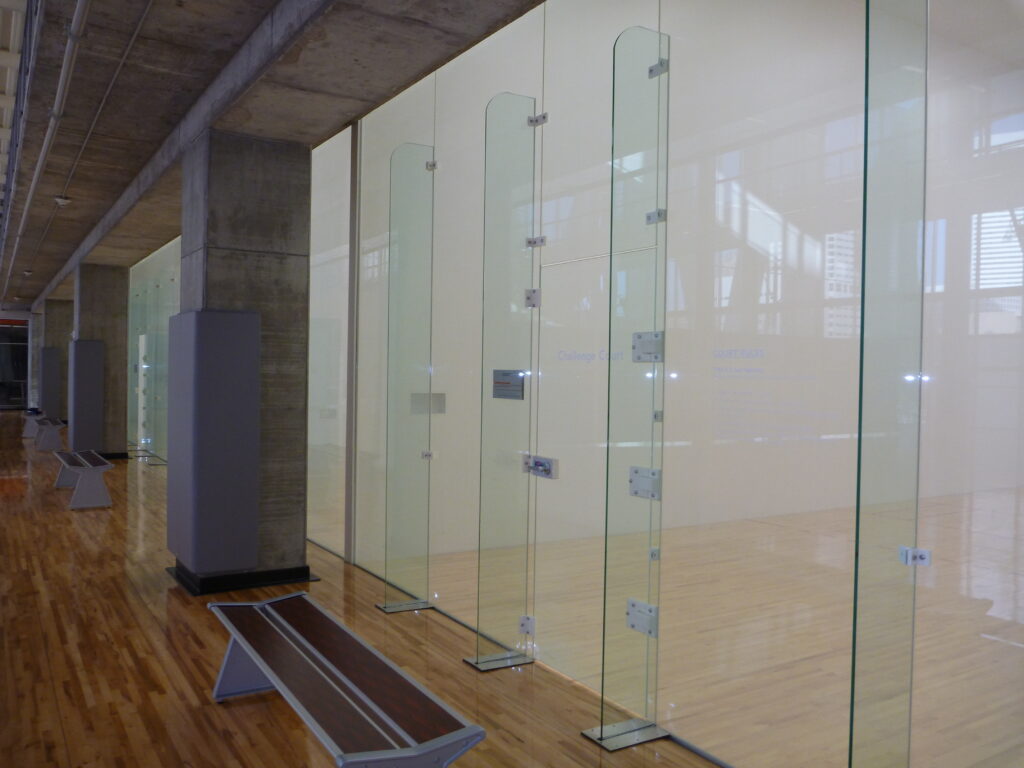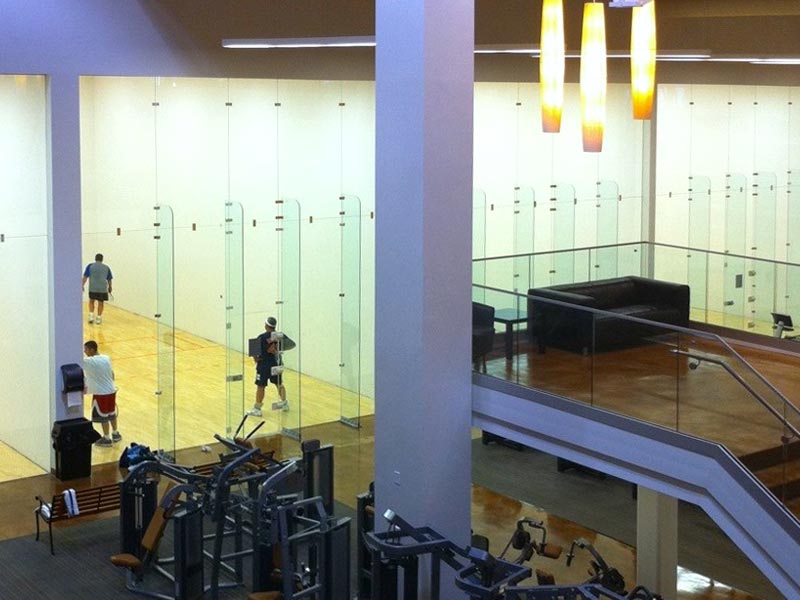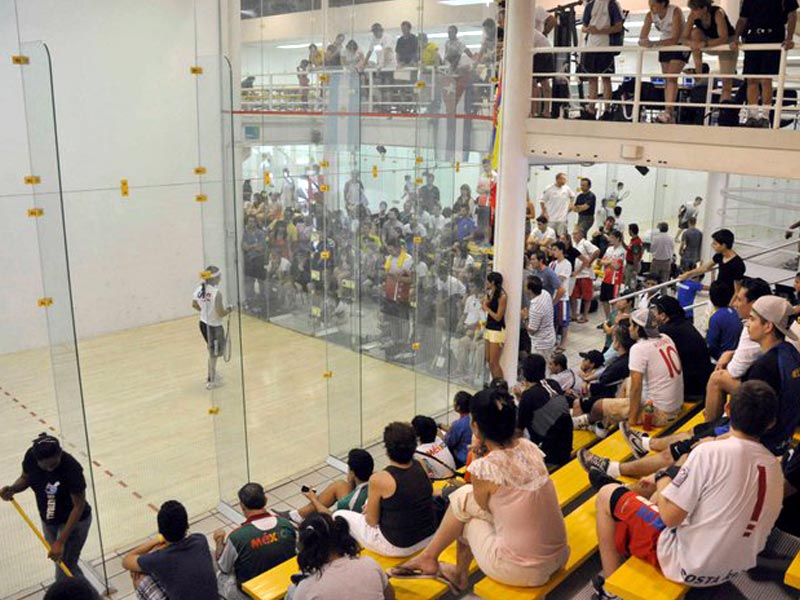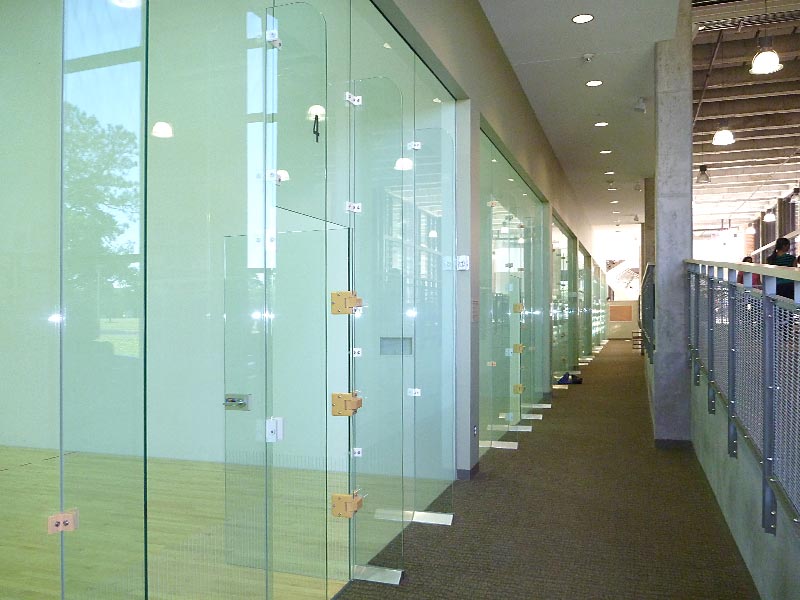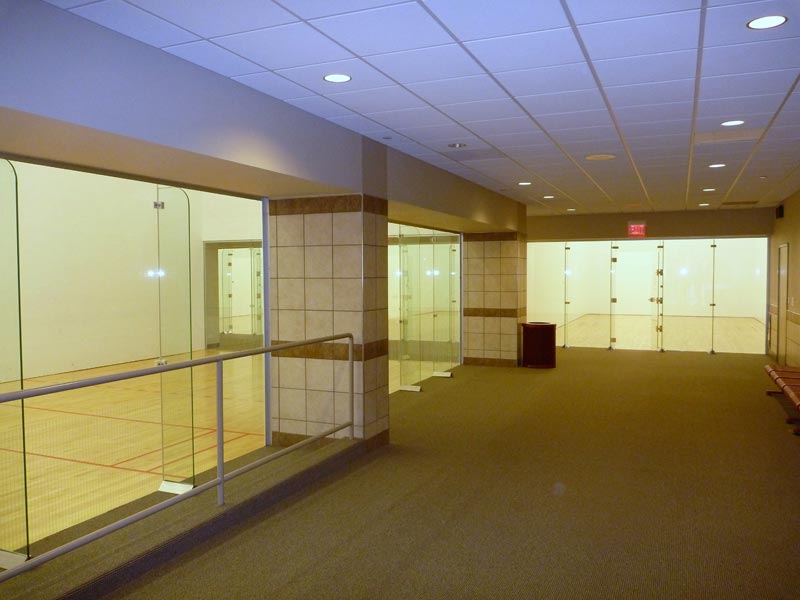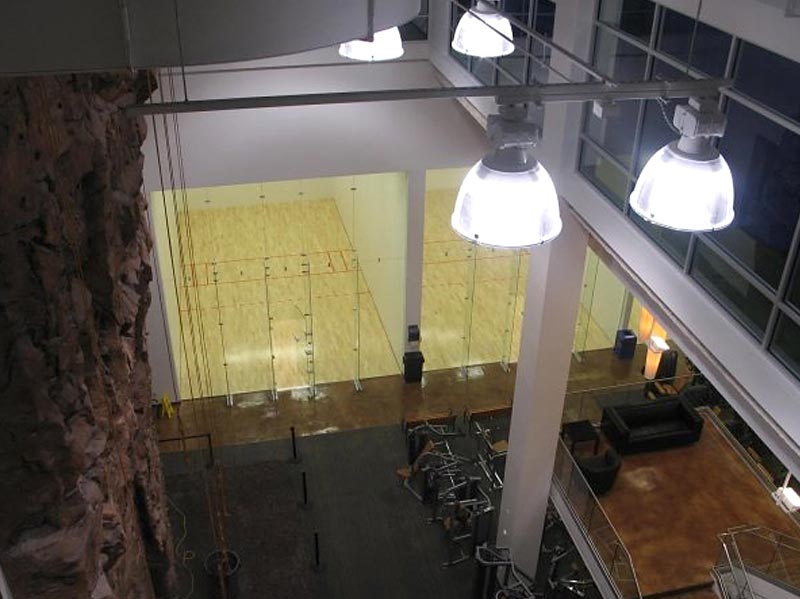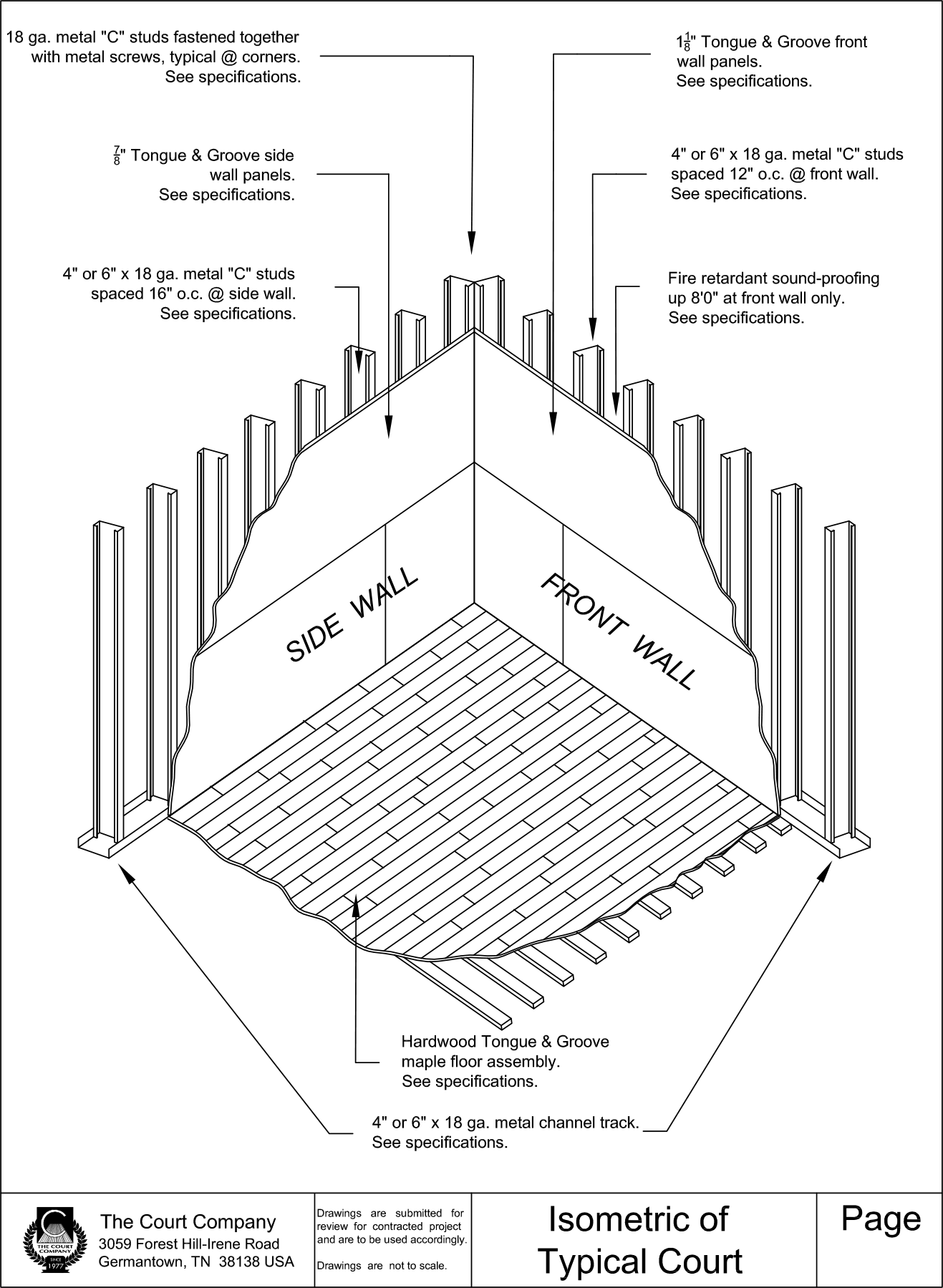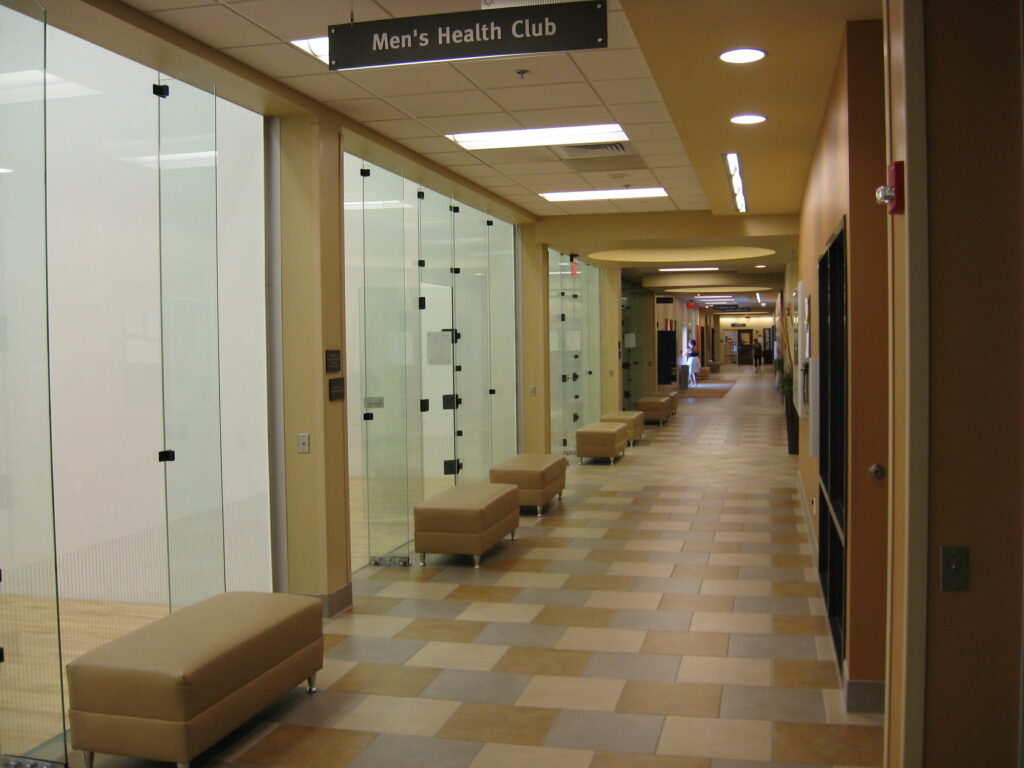
The Court Company’s racquetball courts include the best and easiest products for transforming your space to a tournament-level racquetball court. Whether you need a racquetball court for an athletic club, for your company, or for your residential project, The Court Company can help you throughout the planning and construction process.
The Court Company team members will work with you on every step of the court construction process. Whether you have experience in construction or if you’re gathering information for your architect, we are available to answer your questions. We will walk you through the steps of court construction and determining court finishes.
Racquetball Court Panels
A standard racquetball court is 20’0″ wide x 40’0″ long x 20’0″ high. With the exception of any glass in the court, the playing surfaces of the court are made of wood. The finished wood surface provides uniformity for ball rebound and play. Racquetball courts are designed for heavy use with pre-fabricated, pre-finished panels, which provide a cost efficient and professional system.
The 4’0″ x 8’0″ tongue and groove panels are built with a high pressure laminate. The high-density core and surface gives the panel the structural stability needed for racquetball play. Our panel system is stronger and more durable than other systems. The playing surface of the panel is a white velvet finish used essentially for aesthetics and proper ball reaction. The panels are machined to our exact specifications with tolerances of ±1/32″.
The front wall panel is 1-1/8″ thick, the side and rear wall panels are 7/8″ thick, and the ceiling panel is 5/8″ thick. The tongue and groove panels are faced with a plastic laminate that resists damage during play. Racquet and ball marks can be easily wiped clean with common household cleaners.
Steel Stud Framing
The panels are glued and screwed into place directly to the framing which allows the walls and ceilings to be totally self-supporting. Court framing typically consists of 18 or 16 gauge galvanized steel with varying sizes of 4″ to 6″ depending on the location and design of courts. Wood framing is also acceptable as long as the framing is straight and plumb and does not twist or bow.

